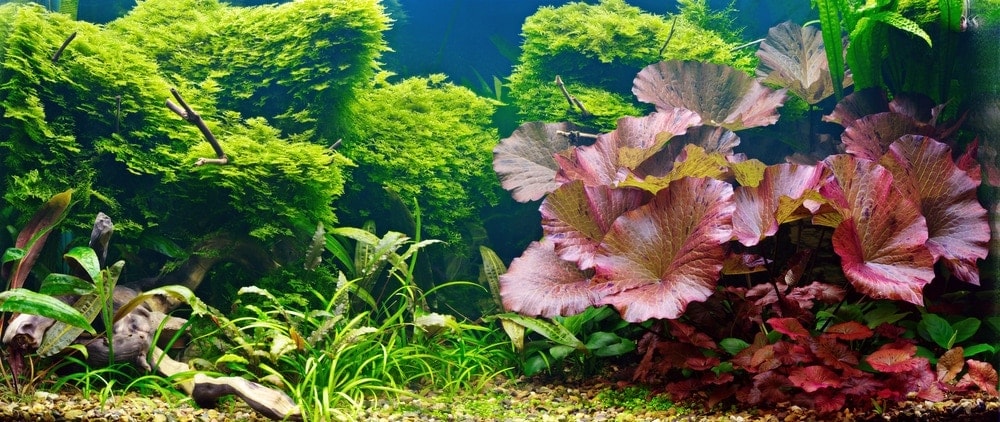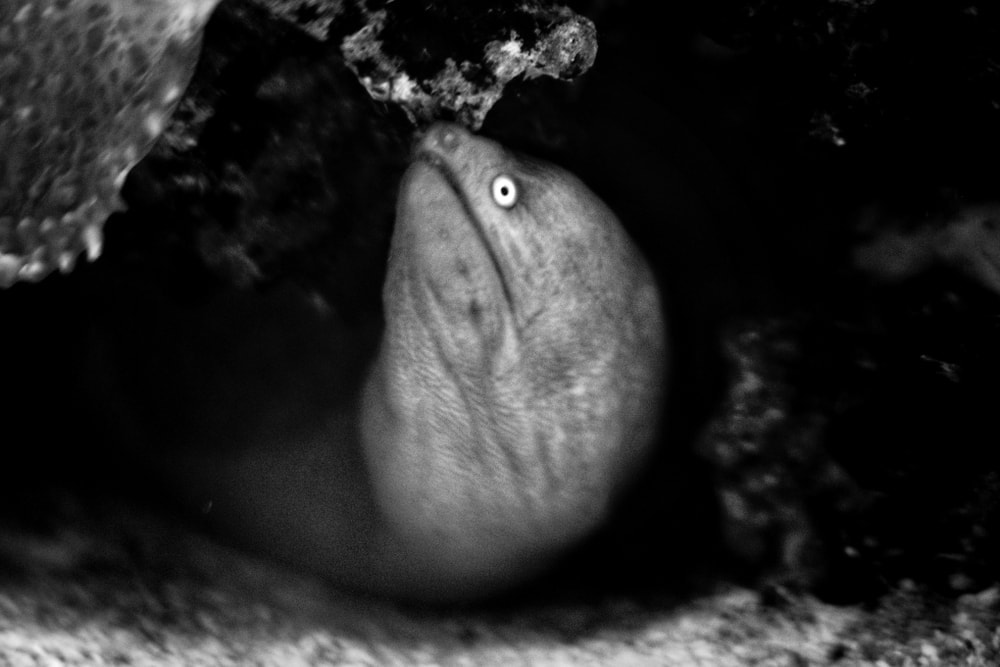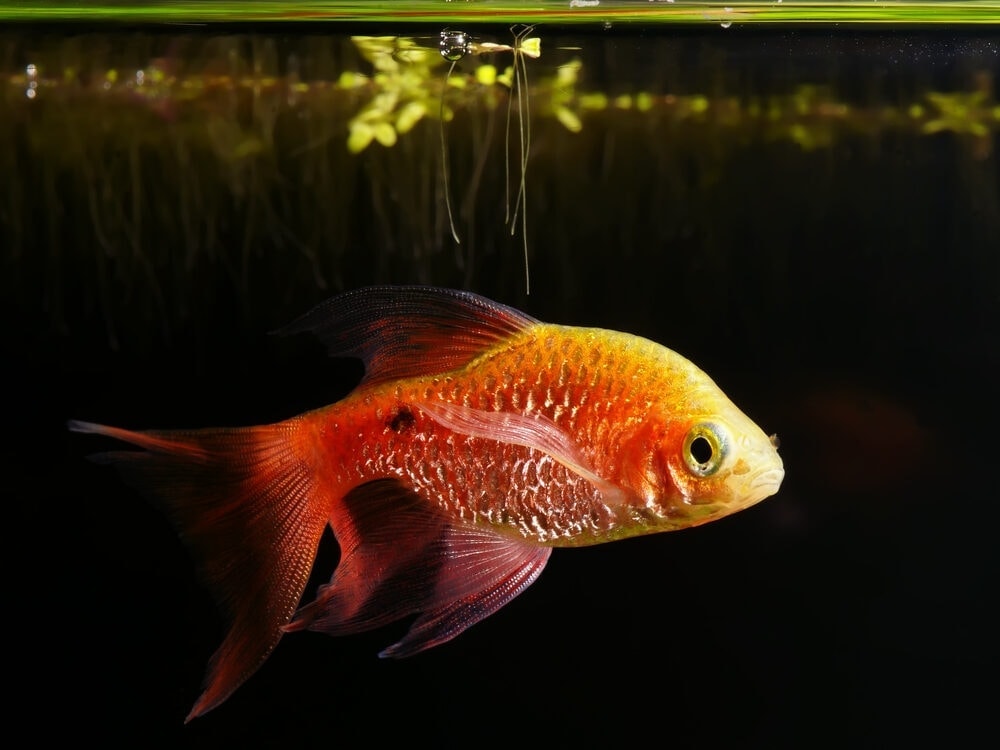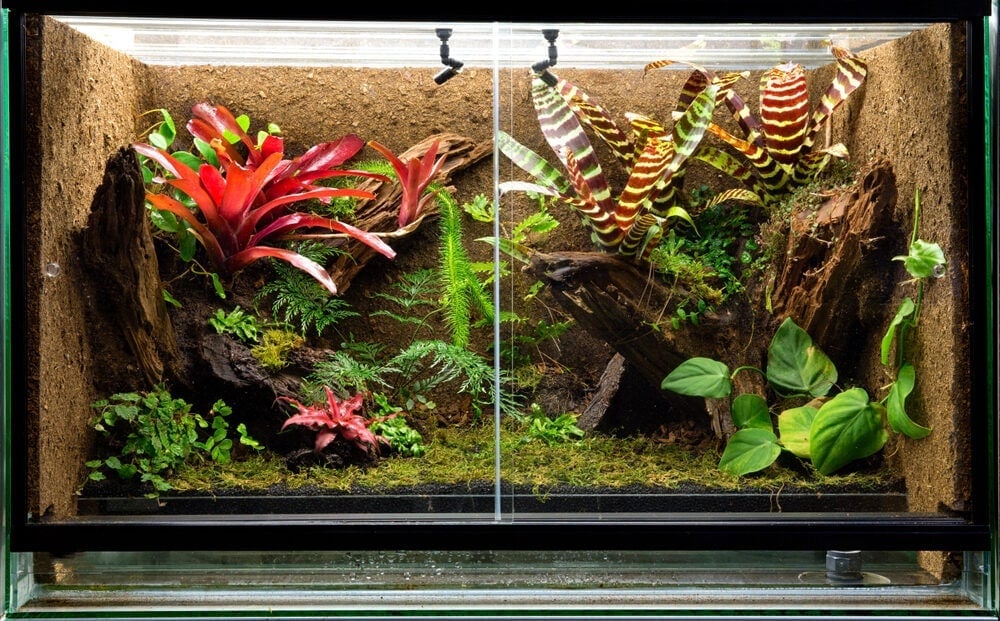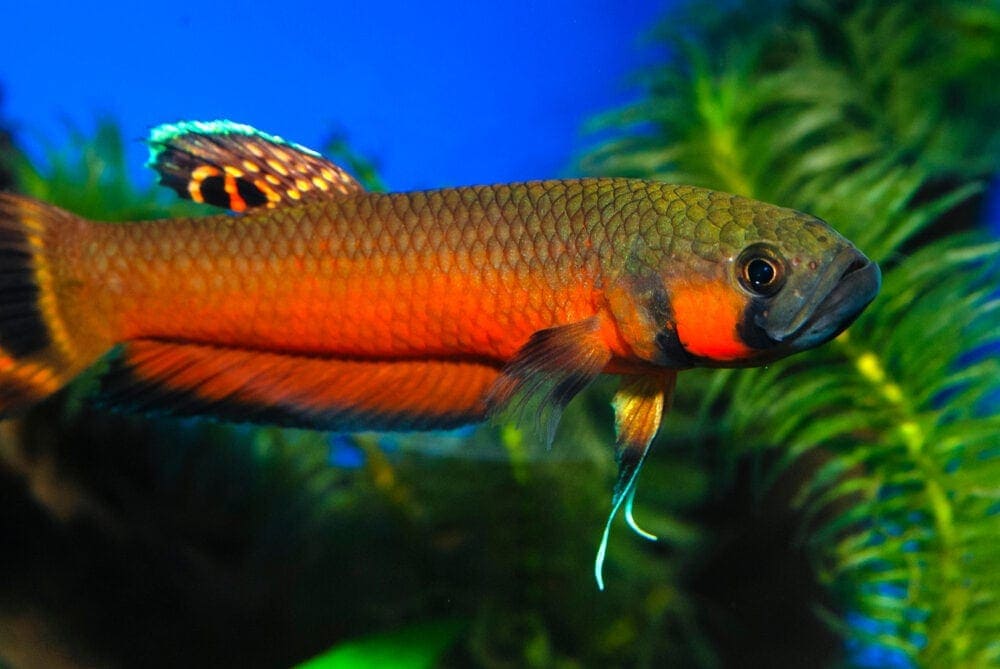The Tiger Lotus is a type of water plant that can also be referred to as the green tiger lotus lily or red tiger lotus lily.
The big difference is that one has green leaves and the other red leaves, but both of them do have dark red patterns on their leaves and purple undersides. They sure do enhance the outlook of the aquarium giving it more life with a dose of the vibrant red color.
Tiger Lotus is not your common plant and does not grow in the best of environments whatsoever; it, bears its roots from West Africa under the genus Nymphaea Zenkeri. The plant can be harvested in an area that doesn’t have running water and that is why they make a good aquarium plant as they don’t require running water activity.
The margins of ponds and lakes or in the drainage ditches are where the tiger lotus makes its home and thrives. They don’t mind the minimized lighting, the dissolved CO2 in water or the water temperature, but will do better if the above are provided in sufficient doses.
Characteristics of the Tiger Lotus Lily
Tiger Lotus is the epitome of beauty, why? You may ask, well because apart from their beautiful arrow-shaped lily pads they produce flowers, which are blue or red in color that also help in propagation after they fruit. If the tiger lily is doing so well and you don’t keep a close eye on it then they will definitely take over the aquarium.
The reason being that they root themselves into the substrate and grow into another plant, the broad surface of the tiger lotus will serve the aquarium dwellers including those that like to attach their eggs on the underside of plants. Light will also be minimized for the bottom dwellers that don’t love too much light.
Unlike the other aquarium plants that need to be planted in specific areas of the aquarium because of their height, the tiger lotus can be planted anywhere in the aquarium and will offer a good hideout for the small tank animals like the shrimps.

Propagation
Get a healthy bulb
If you are a beginner and it is your first time handling the tiger lotus, you have to be careful not to purchase a dead bulb. And since the plant can grow without much assistance from the aquarist, get one that features a firm body structure. If you can squish it with your finger then that should be enough sign that the bulb is dead.
Nutrient provision
Ensure that your aquarium tank doesn’t have many plants when you are planting the lily for the first time, because it does produce a dangerous chemical substance that could affect the growth of other plants, this, therefore, calls for the provision of a lot of space. Remember for full growth the tiger lotus will derive its essential nutrients from the tank, so you have to ensure that your tank has sufficient nutrients.
Enhance growth
The use of fertilizer is welcome at this point to help get the plant off the ground because it will most likely interfere with nutrient concentration for the other plants. Once it starts growing ensure to keep it under control so that it doesn’t become the most dominant.
The above can be achieved by taking out the seeds before they fall on the substrate and start growing, You can also restrict the roots to one place or use minimal light in the tank, though you need to ensure that the lighting arrangements doesn’t interfere with the fish’s life.
Remember that flowers don’t grow unless the leaves of the tiger lotus have reached the surface of the water, so you can minimize growth by restricting the growth of the leaves. This means that if flowers are not allowed to grow then fruiting will not occur, thus no seeds to be replanted into the aquarium.
How best can you restrict the roots?
Since we also want to give space for other aquarium plants to enhance the aquarium’s cosmetic look, it is mandatory that the roots of the tiger lotus be restricted. You will therefore, need to find a plastic container, put in it a root fertilizer tab and add at least four cups of substrate then find a mesh fabric and cover the container.
The plant will, therefore, grow via the hole left in the mesh but with the roots contained in the container. You can now put it into the aquarium and hide it so that it doesn’t spoil the overall look. Pieces of wood, and large rocks can be used for camouflage but eventually the leaves will grow and hide it perfectly.
How best can you restrict the seeds from spreading?
The first method that we have discussed is cutting the leaves to prevent them from reaching the surface of the water; you can also cut the flowers to prevent them from wilting. Another not so common method is incorporating blue and white light in the aquarium that helps prevent the tiger lotus from growing too big.
However, if you use the red type of light then be ready for the donkey work because the plant will reproduce like the way rats do.
Tank requirements
Tiger Lotus can grow up to 31 inches high and 23 inches wide, and for the aquarium water, temperatures need to be maintained at 71 or 86 degrees Fahrenheit and 22 to 30 degrees Celsius, that is if you want your lily to blossom.
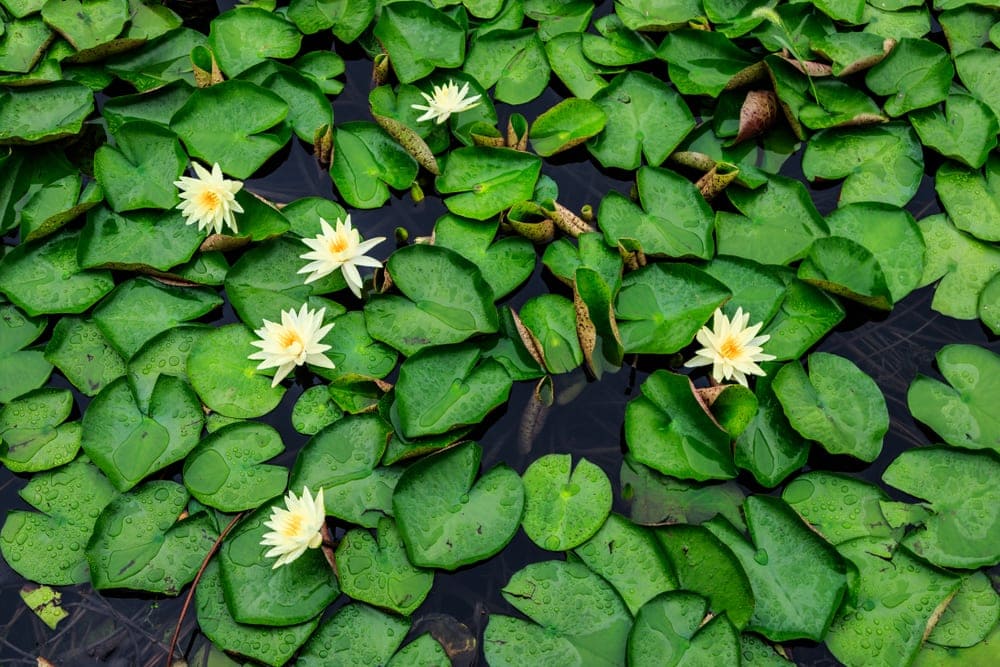
Nutrients
Tiger lotus blossoms come in a natural white color, which means that the red and blue flowers are a result of selective breeding. Lotus will also derive most of its nutrients from the roots so you want to make sure that your substrate is rich in iron. The plant’s ability to survive under water and when exposed are an admirable trait.
When the leaves grow to the surface of the aquarium they derive their CO2 from the atmosphere, and when underwater it will send out an extensive root system to search for nutrients. with this kind of characteristics, it would be best to include plants that don’t need the substrate to thrive, such as the moss balls.
